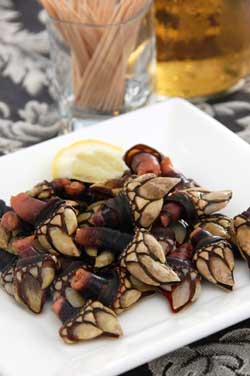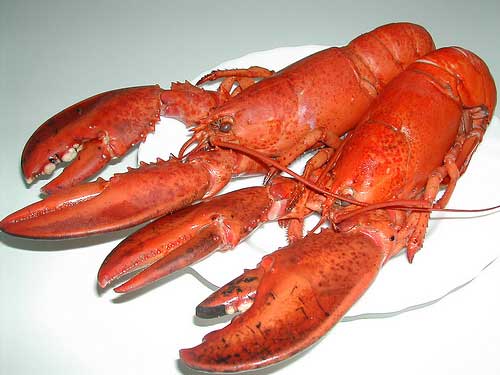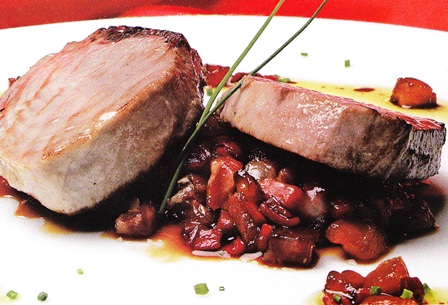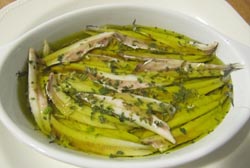

For the Spanish diet fish and shellfish are very important and an vast assortment can be found in markets and restaurants, tapas bars and Spanish tables. If there's one feature of the Spanish gastronomy, it's its amazing variety and each different region has their own characteristic kind, such as percebes in the north and boquerones in the south, though of course, they can be found throughout the country.
The Iberian Peninsula is surrounded by the Mediterranean Sea in the West, Andalusia and Galicia have access to the Atlantic Ocean and the coasts of the northern regions of Asturias, Cantabria, Basque Country and Galicia are bathed by the Cantrabric Sea. This is an important factor to keep in mind when it comes to Spain's rich tradition of fish and shellfish dishes.
However, over 50% of the fish consumed in Spain is imported, this is mainly due to the fact that most of the fishing takes place during four months a year, and there's an important ban (in Spanish) when it comes to young fish. Any fish under a certain size (depending of each variety) is off-limits. Fishermen who are caught breaking the law are harshly penalized, having to pay huge fines. This measure was taken by the government in order to create awareness and to protect Spain's natural resources.
However, that doesn't mean that you can't get a taste if you happen to be traveling to Spain. There are many varieties that are very characteristic of the Spanish fish and shellfish market.

Percebes -or goose barnacle- is a crustacean that grows on wave beaten rocks. Its caught mainly in Asturias, Basque Country, Cantabria and Galicia. Its capture a risky procedure, as this shellfish must be hand picked and as its found in drowned river valleys, cliffs and islands. The pickers are called "percebeiros". The danger its exploit presents, makes the percebe's price soar. However it's a very appreciated delicacy. In fact they dispute the top one place with lobsters and oysters.
However it has a curious history, as not so long ago they were considered a plague to be eliminated when ships' hulls were repaired. We don't know who was the first person to try them, but until the second half of the 18th century the only words spared for this crustacean were that it was a many head hydra or a many goat-hoofed monster.
The best way to taste percebes is boiling them for a short time. Experts don't recommend seasoning the water with anything except salt, as some of its flavor may be lost or not fully appreciated. Another typical way is to dip it in Salmorejo, or percebe soup. However some of the more bold restaurants have more daring recipes.

Bogavante is a decapod crustacean and related to the American lobster , though slightly smaller, and scampi. It lives in shallow rocky areas, and hide under the sand. It can live up to 50 years. Right now in Spain there's is a ban, and it can only be captured between July and August.
Just like its cousin, the bogavante is normally cooked alive. The experts agree that this is how it tastes better and keep its nutritious elements. In restaurants that serve this delicacy the specimens will be kept in a salt water tank and the customer can choose which one he wants.
Bogavantes can be bought alive in fishmongers and markets. However if you're squeamish about this you can ask the fishmonger to kill it before you take it home.
The bogavante can be prepared in many different ways. It can be grilled or boiled, sauteed, roasted, etc. and accompanied by a number of sauces that enhances its taste.

Bonito del norte is the white tuna or albacore caught in the Cantrabric Sea. It's a white fish with intense taste and contributes to a healthy diet. It can reach a size of 4 ft 6 and weigh up to 60 kg. Its capture takes place from May or June to September.
If you visit Spain you'll see that a very common tapa in Spanish bars is "boquerones en vinagre" (anchovies in vinegar), though there are many ways to prepare and serve them.

The boquerón, or European anchovy, is a small fish of up to 8 inches and it's price is normally quite high as it's considered a delicacy. Appreciated in mediterranean cuisine for its strong and particular taste and soft texture. The main way boquerones are cooked in Spain are breaded in wheat flour and fried in olive oil or macerated in vinegar and salted and conserved in olive oil.
Be sure to try these products if you travel to Spain.